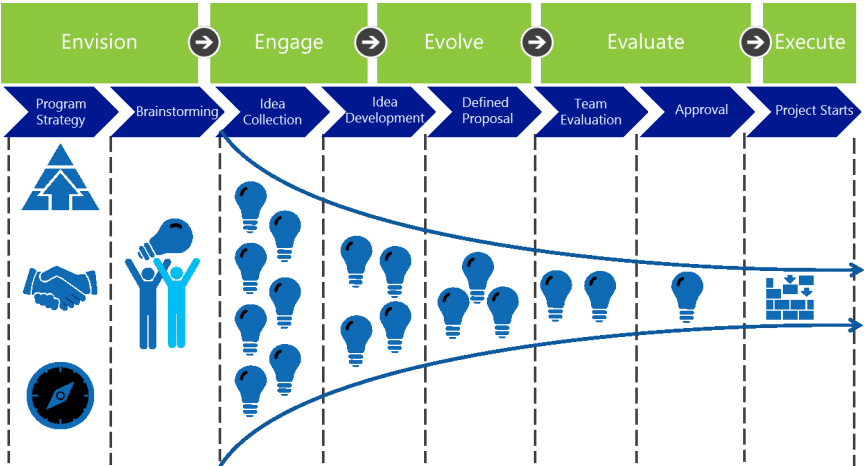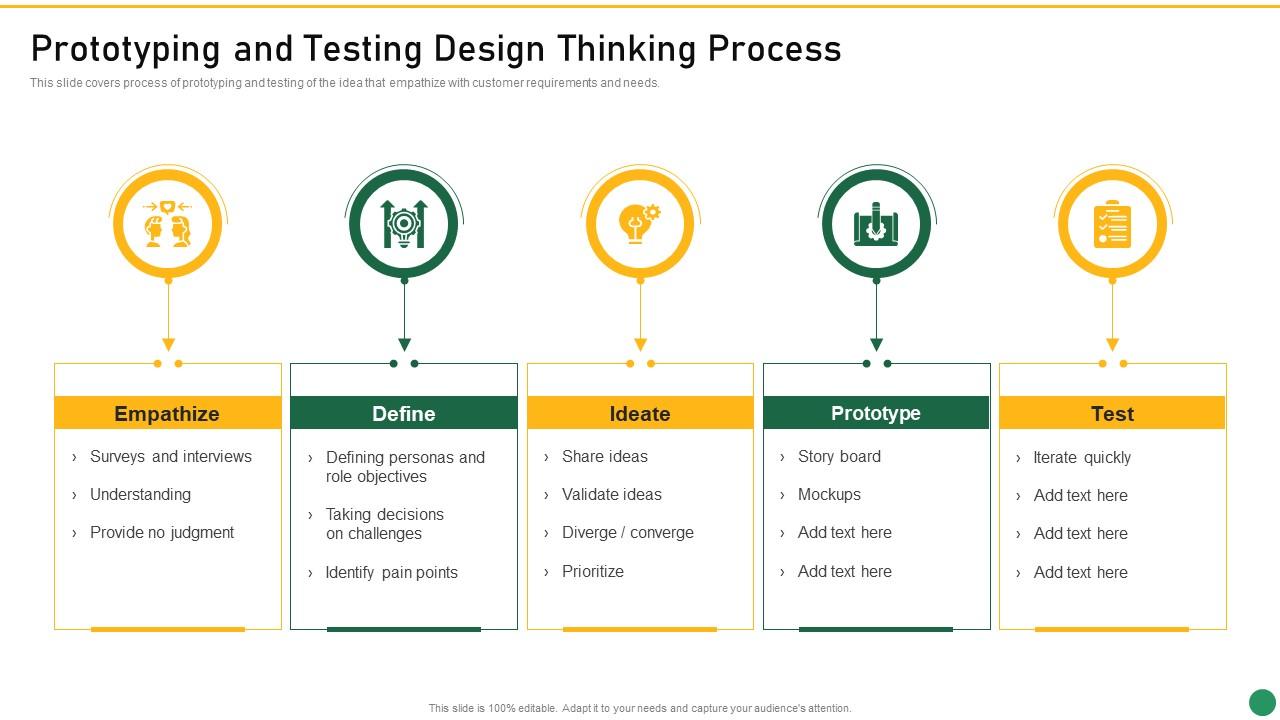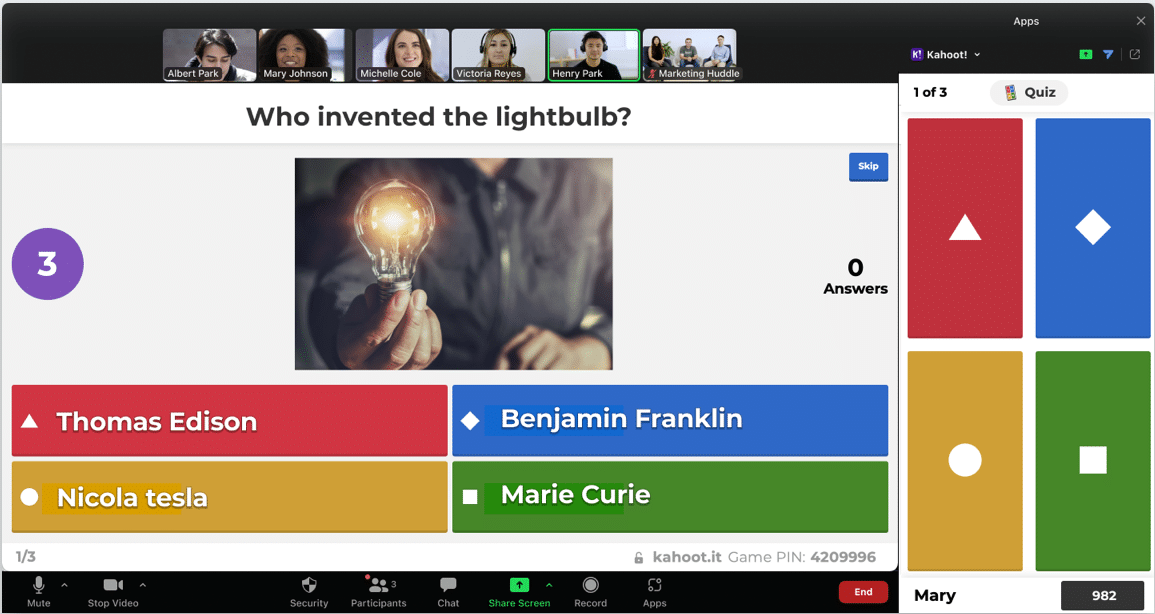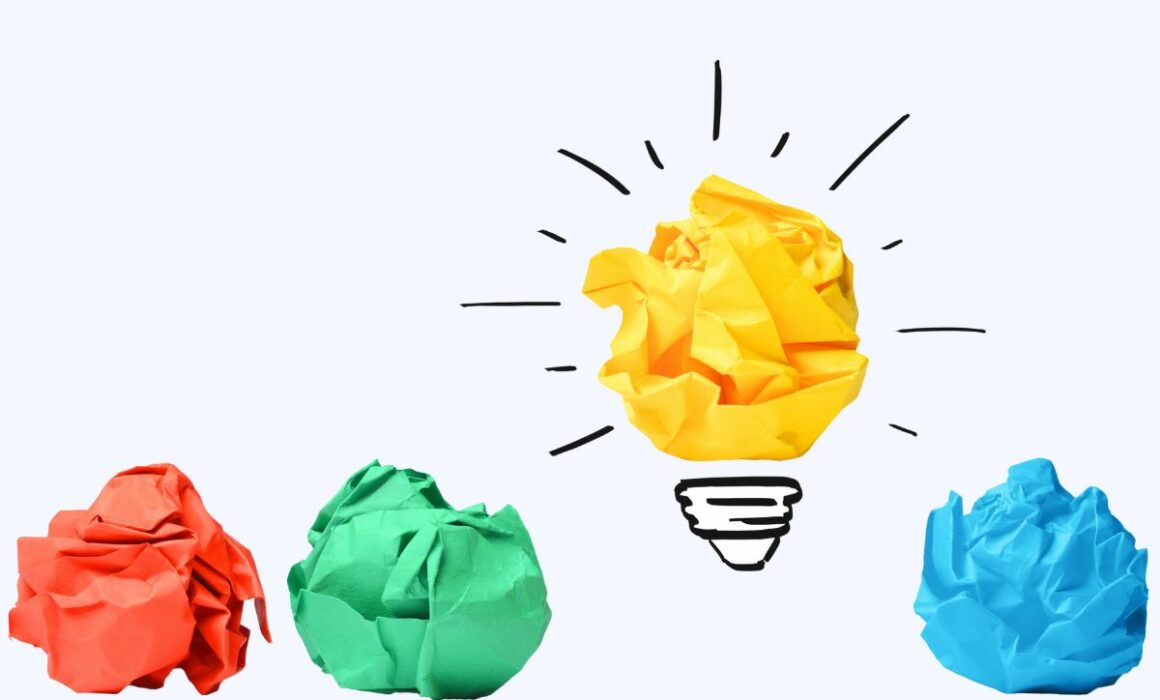Product Ideation: Transforming Ideas Into Game-Changing Innovations
Product ideation is the foundation upon which groundbreaking innovations are built. This specialised process involves generating fresh ideas and critically evaluating their feasibility and potential impact.
This post explores product ideation, highlighting its role in driving business growth and fostering an innovative culture. Moreover, we unveil seven powerful strategies to transform ideas into game-changing innovations that reshape markets and propel businesses forward.
Table of Contents
- What is product ideation?
- Why is product ideation important?
- What can help you with product ideation?
- Can gamification drive product ideation?
- Conclusion
- Machine Learning In Finance: 12 Essential Applications
- How To Create Interactive Compliance Training For Bank Employees
- How Fintech Apps Are Using Gamification To Increase User Engagement
- Top Gamification Companies for Employee & Customer Engagement
Download your free
“Gamification Guide”
Get your PDF now and start transforming your approach to digital engagement!
What is product ideation?
Product ideation is the structured process of generating, developing, and refining new product ideas and concepts. It is an essential part of product creation. Think of any successful product or service — each one came from an idea that evolved into what they are today.
The product ideation process requires a mix of creativity and strategic thinking. It involves brainstorming ideation methods to generate good ideas that ultimately improve business success.
But getting great ideas is just one of many main stages in the overall process. Your ideas must be evaluated and transformed into tangible concepts with the potential to create value in the market. This chart presents a general idea of ideation management.

Source: semanticscholar.org
Managing ideas is a collaborative and iterative process. It’s not just the product team who must create ideas. Instead, product managers must encourage input from different perspectives. They can begin identifying opportunities and analysing them.
Why is product ideation important?
Product ideation is fundamental to the success of the product development process. Let’s look at some of the main benefits of actively engaging in product ideation techniques:
- Uncover new opportunities — product ideation helps businesses identify unmet customer needs and emerging industry trends. By understanding these opportunities, organisations can develop innovative solutions that resonate with their target audience.
- Foster innovation and creativity — by encouraging a culture of ideation, organisations promote creativity and empower participants to think outside the box. This enables them to develop innovative ideas that disrupt existing markets or create entirely new ones.
- Mitigate risks and enhance decision-making — through ideation, organisations can explore new ideas, evaluate their feasibility, and gather feedback early in the product development cycle. This reduces the risk of investing resources into bad ideas.
Product ideation techniques can also be applied to enhance existing solutions. For example, you can use them to integrate feature requests into the product based on customer feedback. This is important for overall customer success because it shows them that their input matters.
What can help you with product ideation?
With that said, let’s delve into seven powerful strategies to transform ideas into impactful innovations.
#1. Understand user needs
The success of a product relies on how much it solves customers’ problems. So, product ideation must revolve around understanding user needs.
This strategy emphasises the importance of putting the user at the centre of the ideation and development process. It also enables product managers to effectively create customer-centric solutions that address real-world problems.
Conducting user research
Thorough user research is crucial to gain insights into user needs. This involves various methods such as surveys, interviews, observations, and usability testing. By researching your target audience, you can gather valuable feedback and uncover unmet needs to inspire innovative ideas.
Download your free
“108 Gamification Elements and Mechanics”
Get your cheat sheet and have a quick reference at your fingertips!
Creating user personas
Developing user personas effectively consolidates user research data and creates fictional representations of target users. These personas capture user segments’ key characteristics, motivations, and goals. Visualising specific user profiles can help align ideation efforts with your target audience’s needs.
Applying design thinking
Design thinking involves — empathising with users, defining their problems, brainstorming solutions, prototyping ideas, and testing them with users. This approach helps you better understand user needs, uncover latent pain points, and ideate practical solutions.
#2. Create a culture of innovation
Fostering a fertile ground for transforming ideas into game-changing innovations requires establishing a culture of innovation. This strategy emphasises cultivating an environment encouraging creativity, risk-taking, and collaboration.
Encouraging idea-sharing
A key aspect of creating an innovation culture is encouraging people to share thoughts freely and collaborate across departments. This can be facilitated through brainstorming sessions, idea management platforms, or innovation workshops.
By fostering a collaborative environment, businesses can tap into the collective intelligence of team members across their workforce. This then brings diverse perspectives together to generate and refine groundbreaking concepts.
Empowering and supporting innovators
Businesses can empower innovators by providing resources and autonomy to explore and experiment with their thoughts. Encouraging a growth mindset, recognising the best ideas, and creating pathways for idea implementation foster a culture where innovation thrives.
Supporting cross-functional collaboration
Collaboration across different functions and teams within an organisation is vital for innovation. Breaking down silos and facilitating cross-functional collaboration enables diverse expertise and perspectives to come together.
By promoting interactions and knowledge-sharing between departments, businesses can spark innovation by combining varied skills, experiences, and insights.
#3. Leverage emerging technologies
This strategy is about harnessing cutting-edge technologies’ power to ideate and create products that meet evolving customer demands. For many businesses, staying at the forefront of technological advancements is the key to unlocking new opportunities and driving transformations.
Exploring AI and Machine Learning
Artificial Intelligence (AI) and Machine Learning (ML) have the potential to revolutionise product development. By leveraging AI and ML algorithms, businesses can extract valuable insights from large data sets, automate processes, and enhance personalizaton.
Embracing Internet of Things (IoT) connectivity
The Internet of Things (IoT) allows physical devices to connect, enabling data collection and automation. Incorporating this into product ideation can lead to products with enhanced functionality, such as real-time monitoring and seamless integration with other systems.
Capitalising on blockchain technology
Blockchain technology provides secure, decentralised, and transparent systems for various applications. Capitalising on blockchain helps explore opportunities for developing innovative solutions in supply chain management, data security, and digital identities.
Embracing Augmented Reality (AR) and Virtual Reality (VR)
AR and VR technologies offer immersive and interactive experiences. They can revolutionise product ideation through virtual prototypes and enhance user engagement. These technologies can potentially transform education, healthcare, and retail industries.
#4. Conduct competitive analysis
A comprehensive competitive analysis allows businesses to make informed decisions during the product ideation phase. This strategy emphasises evaluating competitors’ products, techniques, and positioning to inform the product ideation process.
Identifying competitors and market trends
To nurture a product idea to actualisation, it’s important to identify your key competitors and closely monitor market trends. This analysis can help you identify areas where you can outperform them and differentiate yourself in the market.
Additionally, staying updated on market trends allows organisations to anticipate customer preferences and industry dynamics shifts.
Assessing product positioning and unique selling points
Evaluating competitors’ product positioning and unique selling points helps your business refine its value proposition and differentiate itself effectively. You’ll also want to analyse how competitors communicate their key benefits and target specific customer segments. These insights can help move the product ideation process along or tell you what to avoid.
#5. Embrace design thinking
Design thinking is a human-centred approach prioritising empathy, collaboration, and iterative problem-solving. This strategy harps on the importance of challenging assumptions and embracing creativity.
Empathising with users
Empathy forms the foundation of design thinking and is key to customer retention. Put yourself in your customers’ shoes to better understand their pain points and preferences. This will serve as the starting point from which you can think up ideas with the potential to revolutionise the market.
Defining the problem
Problem definition involves reframing the challenge, identifying the root causes, and articulating the problem statement. It helps you focus product ideation on addressing core issues.
Ideating and brainstorming
Ideation and brainstorming sessions encourage a free flow of thoughts, embracing creativity and deferring judgement. These involve leveraging diverse perspectives and building upon each other’s suggestions.
Prototyping and testing
Prototyping and testing are helpful in validating product ideas and gathering user feedback. You can quickly iterate and refine concepts by creating low-fidelity prototypes or mock-ups.
Testing these prototypes with real users allows businesses to prioritise user feedback and identify potential improvements. It also ensures that the final product meets the needs and expectations of the target audience.
The chart below creates a visual story of the prototyping and testing process.

Source: slideteam.net
#6. Assess market potential
Proper product ideation requires businesses to assess the viability of an idea by determining its market potential. This involves evaluating the market size, competitive landscape, and potential customer demand. It seeks to answer the question — how will the market perceive the product?
Strategic alignment
Before testing your idea at the market level, ensuring it aligns with your business goals is important. Ideas that align closely with the company’s strategic direction are more likely to receive prioritisation and further investment of resources.
Conduct feasibility analysis
This analysis involves assessing an idea’s technical, operational, and financial viability. Given your available resources, it gives you an idea of how well a product might perform in the market. Ideas demonstrating higher feasibility and cost-effectiveness will likely be prioritised for further development.
#7. Engage in continuous learning and improvement
Successful product ideation is not a standalone event. The market is ever-changing, as are customer demands and expectations. You can only afford to rely on more than just one successful product idea.
Fostering a culture of learning and improvement helps refine ideas, enhance existing product features, and stay ahead.
Analyse market trends
Staying abreast of market trends is vital for continuous learning. Analyse market dynamics and customer preferences changes, then adjust the ideation process accordingly.
See failure as a learning opportunity
Some of the best ideas fail to actualise. Successful businesses see failure as an inevitable part of the product ideation journey. Organisations can foster a culture of experimentation and risk-taking. These traits are crucial for developing market-leading innovations.
Can gamification drive product ideation?
The short answer is yes! By infusing elements of games into the ideation product development process, gamification can ignite creativity, enhance engagement, and fuel innovation.
Using gamification techniques in product ideation has shown promising results:
- Increased participation — According to a study by Gartner, gamified ideation platforms can increase participation rates. By introducing game mechanics such as challenges, leaderboards, and rewards, organisations can motivate participants to contribute their ideas actively.
- Enhanced collaboration — Gamification fosters a collaborative and cooperative atmosphere during product ideation. Recent research found that gamified brainstorming sessions increased communication and cooperation among participants, increasing the number of ideas.
- Improved idea quality — The use of gamification in product ideation has been found to improve the quality of generated ideas. In a study by SpringeOpen, researchers found that incorporating gamified elements led to a higher selection of high-quality ideas.
Examples of gamification techniques in product ideation
Gamification techniques can be effectively used in product ideation sessions to enhance user engagement, creativity, and collaboration. Here are three examples of gamification techniques commonly used in product ideation:
Game-based challenges
Organisations can introduce game-based challenges where participants compete to solve specific problems or generate creative ideas. Incorporating time constraints, scoring systems, and difficulty levels can inspire participants to think outside the box and develop innovative solutions.

Source: monash.edu
Leaderboards and rewards
These can create healthy competition and motivate participants to engage in the ideation process actively. Public recognition, virtual badges, or tangible incentives can encourage individuals to strive for excellence.
Virtual simulations
Virtual simulations or serious games can simulate real-life scenarios and allow participants to experiment, test ideas, and receive immediate feedback. These simulations provide a safe environment for creativity and innovation, enabling participants to explore possibilities without fearing failure.
One of the most common games in the market is the SimCity BuildIt. This mobile simulation game allows players to create and manage their virtual city. It provides immediate feedback on the impact of players’ decisions, allowing them to learn from mistakes and iterate on their strategies.
Read also: Enhancing Product Engagement Through Gamification Strategies
Here’s the complete list of gamification examples.
Conclusion
Effective product ideation is critical in driving business growth and fostering a culture of innovation. By embracing the power of ideas and employing the strategies discussed above, businesses can successfully transform concepts into innovations that reshape markets.
If you’d like to learn more about gamification and how you can use it to drive better business outcomes, Mambo.io is here to help you find the right solution. Schedule a demo today to get started.
Latest Posts
Machine Learning In Finance: 12 Essential Applications
The impact of machine learning on finance is significant. Thanks to this technology, financial institutions are now equipped to make efficient decisions. Through the analysis of data sets, machine learning […]
How To Create Interactive Compliance Training For Bank Employees
Banking compliance training isn’t just another task. It’s the stage where everything else performs. Banks must navigate a myriad of regulations and laws. After all, this is a trust-driven, high-stakes […]
How Fintech Apps Are Using Gamification To Increase User Engagement
Discover how gamification in fintech is revolutionizing financial engagement, making banking fun & boosting user loyalty.






